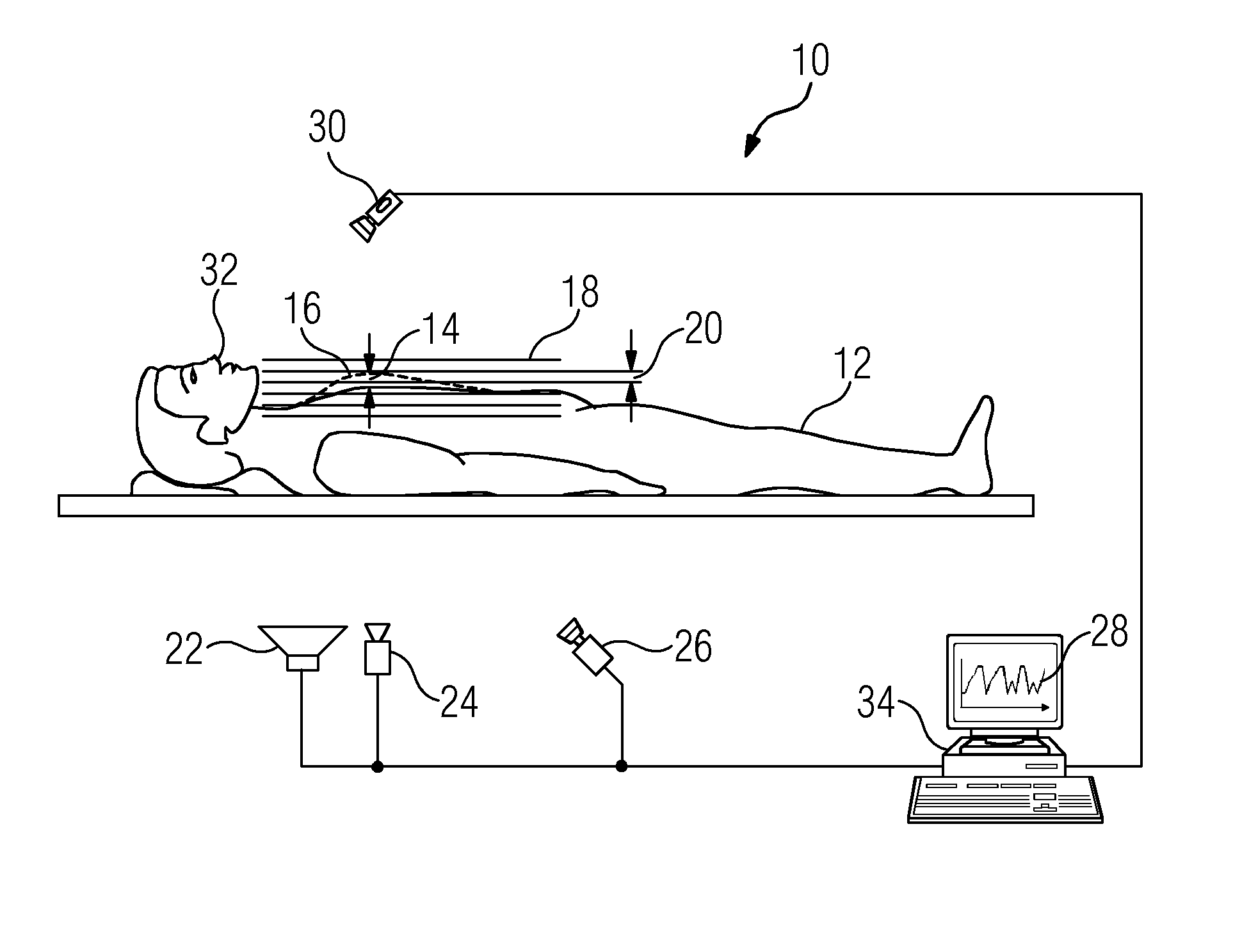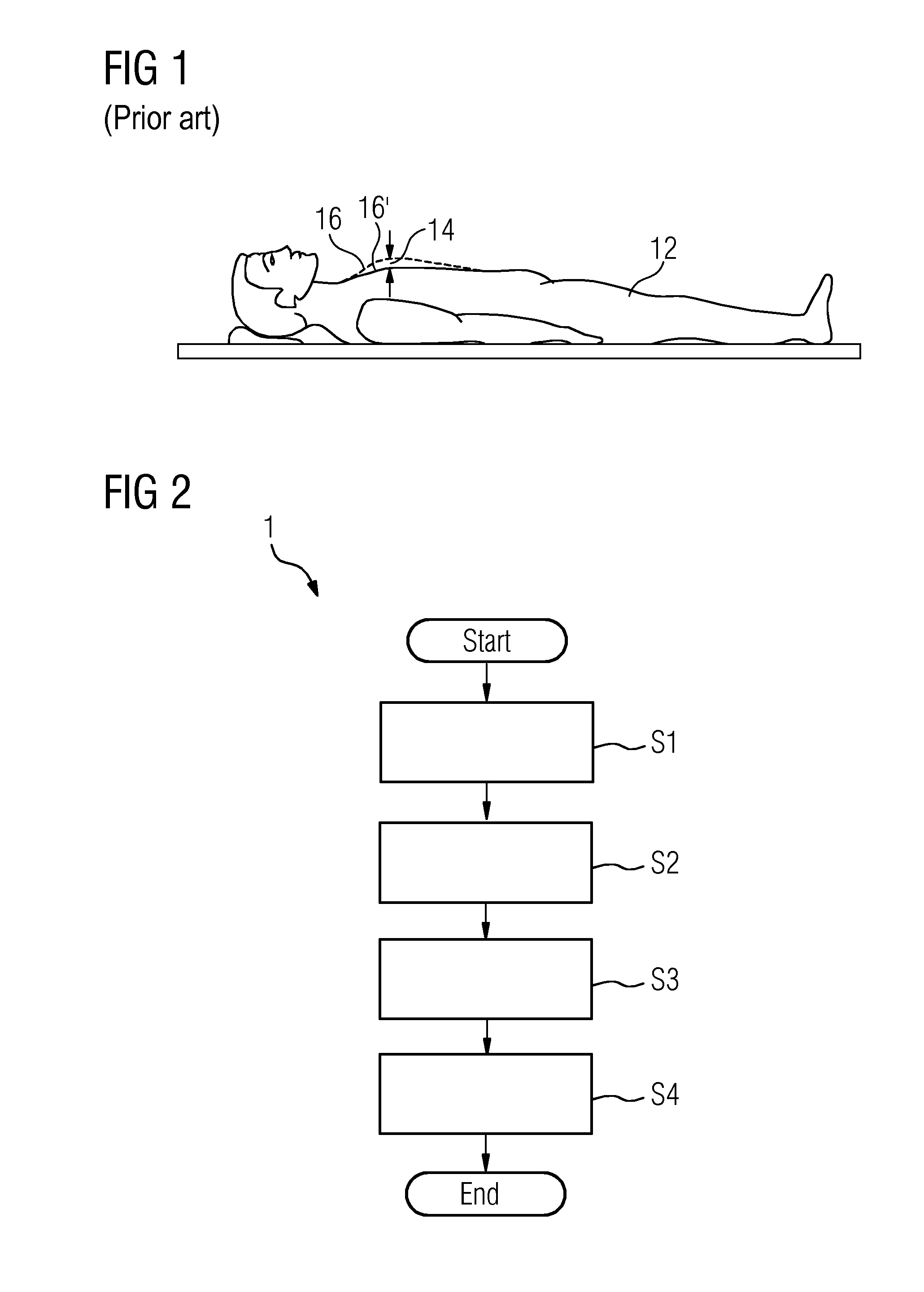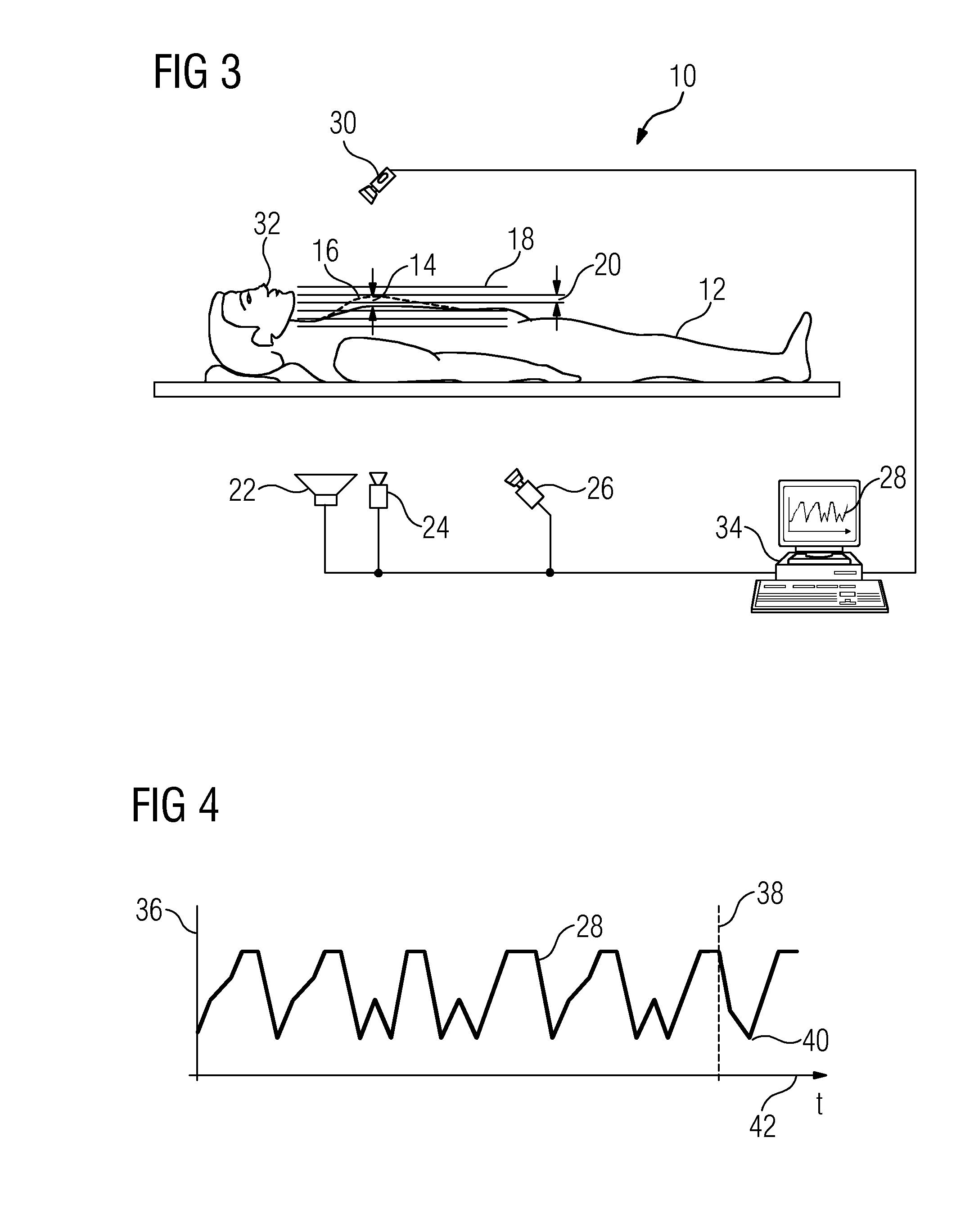Method and device for determining a breathing movement of an object under examination
a breathing movement and object technology, applied in the field of methods and devices for determining the breathing movement of an object under examination, can solve the problems of patient sterility requirements, patient fitted with chest belt, and inability to accurately reconstruct images to form a three-dimensional image, etc., to achieve the effect of improving the adaptation of the mathematical breathing model
- Summary
- Abstract
- Description
- Claims
- Application Information
AI Technical Summary
Benefits of technology
Problems solved by technology
Method used
Image
Examples
Embodiment Construction
[0041]FIG. 1 is a depiction of an object under examination 12, here a human patient, with indicated breathing movement. The breathing movement is shown by a displacement 14 of the thoracic cage, wherein in FIG. 1, the two extreme states, namely complete inhalation and complete exhalation are depicted. The location 16 of the thoracic cage after inhalation is indicated by a dashed line, the exhalation causes the thoracic cage to move in the dorsal direction until the location 16′, which is identified by a continuous line, is reached.
[0042]FIG. 2 shows by way of example a flow diagram of a method according to the embodiments of invention 1 for determining a breathing movement of an object under examination. The method 1 may comprise the method steps S1 to S4. It starts, “Start”, with method step S1 and ends, “End”, after method step S4. The individual method steps may be as follows:
[0043]S1) reception of a mathematical breathing model, said mathematical breathing model comprising a dis...
PUM
 Login to view more
Login to view more Abstract
Description
Claims
Application Information
 Login to view more
Login to view more - R&D Engineer
- R&D Manager
- IP Professional
- Industry Leading Data Capabilities
- Powerful AI technology
- Patent DNA Extraction
Browse by: Latest US Patents, China's latest patents, Technical Efficacy Thesaurus, Application Domain, Technology Topic.
© 2024 PatSnap. All rights reserved.Legal|Privacy policy|Modern Slavery Act Transparency Statement|Sitemap



